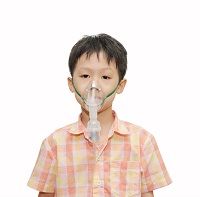Prenatal Exposure to Common Chemical Linked to Childhood Asthma
Prenatal exposure to phthalates, a chemical commonly used in cosmetics, increases children's asthma risk, according to study results published in Environmental Health Perspectives.

Prenatal exposure to phthalates, a chemical commonly used in cosmetics, increases children’s asthma risk, according to study results published in Environmental Health Perspectives.
With over one billion tons produced annually, phthalates are also used in many fragranced lotions, according to The Campaign for Safe Cosmetics. While the Campaign warns of their damage to the endocrine system, the Food and Drug Administration (FDA) claims evidence corroborating the association is limited, and the little research that does found phthalates had a “minimal to negligible” effect.
To understand phthalates’ role on respiratory function, researchers from Columbia University measured phthalates levels in the urine of 300 pregnant women. The participants were of Dominican or African-American descent and lived in Northern Manhattan or the South Bronx a year before their pregnancy.
Women who actively smoked, used other tobacco products or illicit drugs, had diabetes, hypertension, HIV, or had their first prenatal visit after their 20th week of gestation were eliminated from their analysis.
Investigators then followed up with children at ages 5, 6, 7, 9, and 11 years, and inquired on their asthma status, and whether they had developed asthma-like symptoms.
“Children were referred for physician evaluation for asthma based on the first report that the child had wheeze or whistling in the chest, a cough that lasted more than a week, other breathing problems, and/or use of asthma rescue or controller medication in the last 12 months on any of the follow-up study questionnaires,” the authors wrote.
Based on their analysis, 154 children (51%) were seen by a physician due to wheezing, asthma-like symptoms, or medication use. At that point of study, 94 were diagnosed with asthma. The rest of the participants were found to not have asthma.
For asthmatic children, their parent’s butylbenzyl phthalate (BBzP) and di-n-butyl phthalate (DnBP) levels were linked to their symptoms (p < 0.05) and development (RR = 1.17 (95% CI: 1.01, 1.35) and RR = 1.25 (95% CI: 1.04, 1.51)).
Moreover, the investigators found the “risk of current asthma was >70% higher among children with maternal prenatal BBzP and DnBP metabolite concentrations in the third versus the first tertile.”
While the authors recommended additional research on the topic, they believe their findings “raise new concerns that the presence of relatively ubiquitous environmental exposures may have deleterious respiratory effects.”